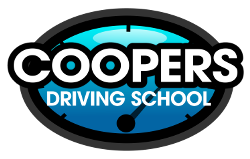The Practical Driving Test
When you have passed the Theory test you can apply for your practical driving test.
Always consult with your driving instructor about when to apply for your test, and make sure that your instructor will be available for when you would like the test.
To be test standard, you should be able to drive your car safely and smoothly with minimum instruction, with full awareness of other road users and consideration for the road, weather and traffic conditions. You should also be competent with each of the slow manoeuvres.
You can book your test online at www.gov.uk, or by calling the 'Driver and Vehicle Standards Agency' on 0300 2001122, on online at www.gov.uk. The current fee is £62.00. You will need your driving licence and theory test pass certificate to hand, plus a method of payment.
Arriving at the test centre
The car you use for the driving test must be fitted with an additional passenger mirror, headrests, L-plates, Tax, and the appropriate Insurance. The vehicle also needs to be clean and in good working condition capable of normal performance for that type of vehicle. We guarantee that all Coopers driving school cars are fit for the driving test.
Documents to take with you:
1. Your signed provisional driving licence.
2. Your theory test pass certificate.
3. An acceptable document which includes your photograph and signature if you have the old style paper licence.
4. The new photo driving licence with counter part.
* Item 3 can be any of the following:
A passport, photo-bearing version of cheque or credit card, work-place identity card, student or trades union membership card, card used to buy railway tickets, or a school bus pass.
If none of these are available, you must provide a photograph of yourself which has been certified by an acceptable person, who can be an Approved Driving Instructor or Motorcycle Instructor, an MP, a Justice of the Peace, a minister of religion, a lawyer, a doctor, a teacher, a local councillor, a bank officer, a civil servant, a police officer or a commissioned officer in Her Majesty's armed forces.
Arrive with your driving instructor at the test centre in plenty of time and try to relax. The test centre in Worcester, is located in Warndon, but tests at other test centres can be arranged at your request.
Once the examiner has checked your identification, you will be asked if you'd like your instructor to accompany you on the test. This is your decision your driving instructor will wait in the test centre whilst you show the examiner to your instructor's car.
The examiner will conduct a short eye-sight check and the 'show me tell me' part of the test asking you 2 simple questions about your car. If you have learned with us, you will be well prepared for this during your lessons, and should be able to answer these with ease. Make sure you are familiar with opening and closing the car bonnet.
The examiner will now get in the front passenger's seat, and explain briefly how the test works. You'll be asked to start the car and given directions of where to drive.
The Drive
You have about 40 minutes in the car; that time includes one of the three or four possible slow manoeuvres: turn in the road, reversing round a corner, reverse parallel parking, or reverse bay-park, and you may be required to do an emergency stop. The reverse bay-parking manoeuvre may take place off-road at the test centre. During the test it is also likely that you will be asked to demonstrate a hill-start and an angle start. There is also a 10 minute independent drive, where you will be asked to follow simple line drawings or direction signs. Your instructor can explain this in more detail. The rest of the time is taken up with general driving.
If you do make a wrong turning during the driving test, then it is the examiner's responsibility to get you back on to the test route. Taking a wrong turn will not usually cause you to fail your driving test.
Some minor driving faults are permitted during the test. These are errors that do not in themselves create an actual or potential danger to other road users and you are allowed up to 15 of these. You will fail the test should you get more than 15 minor faults, or make a serious or dangerous error.
At the end of the test the examiner will tell you whether you have passed or failed. If you pass, your driving licence will be needed for the examiner to fill in the pass certificate. The examiner can send your old licence to DVLA for you, and you will usually receive your full licence within a two weeks. You can drive on your own in the meantime with your blue pass certificate.
We offer 'Pass Plus' courses, once you have passed your test you should consider discussing this with your driving instructor.
Good Luck!!
The Coopers Driving School Team.

